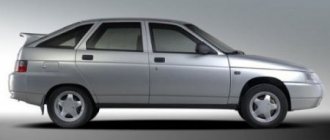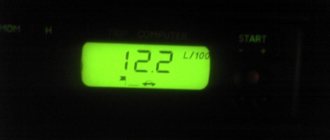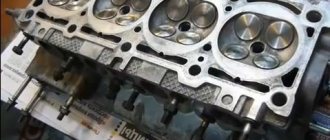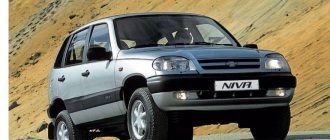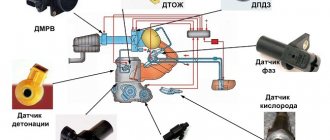The production of frets of this model began in 1997; they belong to the popular Samara family. Thanks to the technical advantages of the car and the rigor of its design, it has become very popular on the market. Experts also include the fuel consumption of the VAZ 2115 as an advantage.
These reliable cars were produced in large quantities from the factory, and their supply stopped only in 2012 after the appearance of the new Granta model. Many car enthusiasts were never able to say goodbye to the previous modification of the car, so they still continue to use the VAZ with pleasure.
| Engine | Consumption (highway) | Consumption (city) | Consumption (mixed cycle) |
| 1.6 l | 6.3 l/100 km | 10 l/100 km | 7.6 l/100 km |
Specifications
This is an improved model of the well-known VAZ 21099. The sedan that replaced it has become more popular than its predecessor. It features a number of positive innovations, which include a more modern assembly, economy, and the necessary comfort for the driver.
In Samara, the front optics have been modernized, the design has become streamlined and modern, and the stylish updated trunk lid attracts the attention of many consumers. The modified sedan can be equipped with electric windows, fog lights or heated seats. The on-board computer has become a classic feature for this car.
How to restore an Instagram page without mail • Checking status
| How to reduce fuel consumption on a VAZ 2115: 403 - Access denied - How to Reduce Fuel Consumption on a VAZ 2115 ~ - VPM And sometimes fuel consumption increases so noticeably that the question involuntarily arises: what is the reason and what needs to be done so that the norm comes into line with the factory ones installations or at least approached them. If the injection seven consumes a lot of fuel, and the driver is firmly convinced that the reason is in the injector, then the idle speed of this device is usually adjusted. |
- Idle speed sensor. Operating principle, signs of malfunction.
- Throttle position sensor (TPS) VAZ.
Advantages of the machine
For more than ten years, developers of modern cars have been resorting to a new type of fuel supply. Outdated carburetors have been replaced by injectors that increase engine efficiency. At the same time, they significantly reduce the flow of fuel into the tank, which significantly saves fuel consumption.
VAZ has such capabilities, which positions itself as a reliable, economical sedan modification vehicle. The fuel consumption of the VAZ 15 per 100 km is significantly less than that of other cars of a similar pricing policy.
Second generation
Since 2013, the Lada Kalina car line has been updated and new cars have entered the market. Among them was not the usual sedan, with which the series began production, but the production of 5-door hatchbacks and station wagons continued. Fuel consumption on the new Lada Kalina has been reduced, but the manufacturer's requests do not always correspond to customer reviews.
The second Kalina came with two types of engines, each with a volume of 1.6 liters, but their power differed. There was also a choice of transmission options; as before, it was possible to purchase a car with a manual 5-speed gearbox or with a 4-speed automatic. A new feature was the entry into the arena of a 5-speed robotic transmission.
The power units installed on the Lada Kalina 2 had the following fuel consumption:
- VAZ-21126 - 98-horsepower engine, 1.6 liter capacity. with four cylinders and 16 valves, it was equipped with a distributed fuel injection system. Gasoline consumption figures in the city are 9.9 liters, on the highway 6.5 liters.
- VAZ-21127 - had 106 hp at its disposal. And fuel consumption on a free road was 5.8 liters, in urban driving it was 8.4 liters. Gasoline was also supplied by distributed injection.
Owners about consumption on Kalina 2
- Peter, Tyumen. I bought a Lada Kalina Cross in 2015. This is one of the few representatives of the domestic automobile industry with horsepower exceeding one hundred. And indeed the car turned out to be lively; my hatchback can compete with some foreign cars when driving on open sections of the road. The other side of the coin is gasoline consumption in the city; I did not observe the promised 8.4 liters both during the run-in and after it. This engine consumes at least 10 liters per 100 km of road with traffic jams.
- Lev, Voronezh. My wife does not know how to use a manual transmission, so I had to buy a car with an automatic transmission system. The choice fell on the second generation Lada Kalina 2014. Naturally, I understood that, as with any automatic, fuel consumption would be higher than with a manual, and that’s what happened. My figures in the city, judging by the on-board computer data, are usually within the range of 11-12.5 liters per 100 km of traffic. This sad moment worsened three years after the purchase, the injector with nozzles became clogged, for some reason this happens more often on the 8-valve Kalina than on other engines.
- Taras. Moscow. I never regretted buying Kalina Cross for my baby; she often helped me out in situations when more expensive foreign cars failed. And when breakdowns happened, and this happens, the repairs did not cost me much at all. Of course, it cannot be considered a plus that the Lada Kalina has fuel consumption per 100 km, with a power of 106 hp. higher than foreign cars of the same class. In my case, in the city, I fill at the rate of 12 liters, but on the highway the situation changes dramatically and costs drop to 7.5 liters.
- Ilya, Odessa. For a car with such a price, many disadvantages are forgiven, but they exist. First of all, this is the fuel consumption of the Kalina; it can sometimes be compared with the performance of some SUVs. Regular failure of components and parts is also somewhat annoying, but the main thing for me is road noise. Compared to foreign cars, you feel as if you are driving without doors. Of course, there are also advantages: it is inexpensive to service and parts are always easily accessible.
- Andrey, Nakhabino. I don’t understand why people have so much hatred for the Lada Kalina, because you can find out everything about it before buying, and there are plenty of disadvantages, but there are also advantages. Mostly they complain about high gasoline consumption, but you can always install LPG and save money. The metal on the body is good and thick, its quality cannot be compared with Chinese tins. It’s just a pity that the quality of the factory paint is rather weak, and over the years bubbles appear in some places.
Car fuel consumption standards
Official data
Gasoline consumption indicators according to technical data sheet
:
- The fuel consumption rate for a VAZ 2115 (injector) on the highway will be 6 liters.
- In the city, the consumption indicator will indicate 10.4 liters.
- In areas with mixed roads – 7.6 liters.
Real gasoline consumption data
The average fuel consumption of a VAZ 21150 with a manual transmission, engine capacity of 1.6 liters is 7.25 liters on the highway, in the city this figure increases to 10.12 liters, and in mixed mode - 8.63.
Flow data in cold weather
:
- Gasoline consumption in winter on a Lada 2115 will be up to 8 liters on the highway.
- Within the city limits you will have to spend 10.3 liters.
- The mixed view of the road will show the fuel consumption of a 9 liter VAZ.
- Off-road in winter, the car will consume 12 liters.
Actual gasoline consumption of VAZ in summer
:
- In summer, on the highway you will need 6.5 liters with a mileage of 100 km.
- The fuel consumption of the car in the urban cycle is 9.9 liters.
- With a mixed route, fuel consumption will correspond to 8.3 liters.
- In off-road conditions, VAZ 2115 gasoline consumption per 100 km increases to 10.8 liters.
These are good data that determine the economy of a domestically produced car and show its advantage over some foreign cars.
VAZ 2115 1.3 MT 135 hp
Fuel consumption rate per 100 km
A very rare version, produced in small quantities for special orders. On the assembly line since 1997. It is considered a sports modification, and is positioned as a 1.3 Wankel. It differs from other brethren in the rotary arrangement of the cylinders. It has front-wheel drive and is produced exclusively with a carburetor. Features ABS. The power plant is powered by AI92 gasoline and consumes 12.5 liters in the city, and 10 liters on the highway. Maximum acceleration is up to 190 km per hour.
Real consumption
- Andrey, Pskov. I got a 15-shka 1.3 liter 135 horses 2005 from my brother. Playful, it goes smoothly along the highway, but you have to fill much more than in a regular VAZ 2115 with a 1.5-liter engine. In the city it turns out to be 12.3 liters. Niva’s friend eats almost the same amount.
- Maxim, Dubna. I drove a 2115 1.3 manual (135 horsepower) for two years. I took it from my hands in 2008. with installed air conditioner. Apparently, someone decided to get confused and installed it themselves. So my “fifteenth” eats almost 13 liters in the city with the cooler on. Some unrealistic expense.
- Nikolay, Moscow. Lada 2115 1.3 MT 2007. It's immediately obvious that this version loves speed. At low speeds up to 80 km/h (third gear) it eats up a fair amount of fuel. It comes out to almost 12.5 liters. On the highway, the figure, of course, drops to 10 liters per hundred.
- Vladimir, Rogachevo. A strange 1.3-liter 135-horsepower engine for a 15-wheeler. I had this version from 2003. On the highway it clearly lacks a smart transmission to show good dynamics, and in the city it starts to consume gasoline non-stop (almost 14 liters). I was able to withstand it for two years, and then switched to Priora 1.6 with normal consumption.
- Alexey, Smolensk. I need a Lada 2115 1.3 produced in 2004. I like it because it stalls at traffic lights better than any domestic car. But these jerks are expensive - you have to fill up 30 liters for a maximum of 3 days, given that I drive about 80 km a day in a combined cycle.
Causes of excessive fuel consumption in Lads
Over time, each vehicle can increase its fuel consumption, which can be due to various factors. The main reason is engine wear or clogged spark plugs. Proper care of your vehicle will bring you pleasure from high-quality, safe and economical driving for many years.
It is necessary to strictly monitor the fuel injectors, fuel pump and fuel filter, which primarily suffer during long-term operation and lead to high fuel consumption.
The average fuel consumption at idle for the VAZ 2115 per 100 km is 6.5 liters. This figure may decrease or increase depending on the modification of the car and the year of manufacture. The rate of gasoline consumption at idle speed and electronics turned off is 0.8-1 liter per hour.
According to the passport, the fuel consumption of the VAZ Samara-2 car is 7.6 liters in mixed mode, in the city - no more than 9. If such indicators have increased, then the car owner needs to determine the cause and eliminate it.
Is it possible to reduce consumption
If the owner wants to bring gasoline consumption to values close to factory parameters, then it is necessary:
- When accelerating, gently press the accelerator pedal, monitoring instantaneous fuel consumption using the on-board computer.
- Change to a higher or lower gear in a timely manner, avoiding the engine operating at an increased speed or with overload.
- Use the vehicle's inertia and engine braking mode.
- Remove any foreign elements from the car body that were not provided by the factory (for example, a shield on the edge of the hood or deflectors along the upper edge of the glass in the doors).
- Before starting a trip, check the tire pressure, and then bring the parameter to the factory recommended values.
- Carry out periodic maintenance to assess the condition of wheel bearings and brake mechanisms. Jamming of the pads leads to increased fuel consumption, overheating of the wheel hub and impaired vehicle controllability.
To reduce fuel consumption, the driver needs to switch to driving mode in overdrive 5th gear at a speed of up to 60 km/h. This technique allows you to consume 3.9-4.0 liters of fuel (according to the on-board computer) and is used if necessary to get to a gas station. Increasing the speed to 80-90 km/h increases consumption on the highway to 5.5 liters (there are 2 people and a load weighing 30-40 kg in the car).
Bottom line
A car with an injector and built-in computer technology can easily be tuned, which gives it a more modern look, aesthetic beauty, and more comfortable operation. The above indicators of gasoline costs according to real data and according to the technical data sheet do not have significant differences
. It all depends on the care of the car, parking location, and weather conditions.
Despite the fact that the production of this car has already ended, you can see many happy VAZ owners on the roads, which indicates its reliability, high wear resistance, economy in maintenance and fuel consumption. The plant in Togliatti, where the car was produced, has been famous for many years for the high quality of the vehicles produced, which are optimally suited to the conditions of use in our region.
VAZ 2114 – 8kl. engine 2111 1.5 MT 77 hp
The 8-valve 1.5 MT injection engine became the first engine in the line of power plants that equipped the Samara-2 model range. With a power of 77 hp, the unit could accelerate the car to 100 km/h in 13 seconds and reach a top speed of 165 km/h. Average gasoline consumption is 7.3 liters, consumption in the city/on the highway: 10 and 5.7 liters per 100 km. The motor was installed on models until 2013.
Gasoline consumption per 100 km
- Anatoly, Perm. I bought this car in 2006 with 12 thousand miles. I won’t say that it doesn’t break, but for such a cost and cheap repairs you can put up with the shortcomings. Economical driving pulls 4.5-5 liters, in the city about 6 liters. But with traffic jams and rough driving, the city begins to take 8-9 liters.
- Gregory, Astrakhan. I took a risk by buying a Samara with 60,000 mileage third-hand, even though the car was produced in 2005. As a result, I have been driving for 4 years without incident. The 1.5 engine pulls out its 150 km/h perfectly. Consumption on the highway is on average 5.4-6.3 liters, depending on the speed. In Astrakhan with traffic jams 9.5 liters, without stops - 7.5 maximum. The only thing missing is air conditioning.
- Kirill, Moscow. An excellent workhorse for Russian roads and weather conditions. Model 2003, 1.5 MT. Cruising speed of 110-120 km/h requires 6.2 liters, and city trips - 9-9.5 liters. In frosty times it starts well, although gasoline consumption jumps by a liter or two. I replaced the front bumper and nothing else broke.
- Daniil, Ufa. My parents gave me this “basin” and found it almost new, 2012. This is my first car. In terms of consumption, I can say that it all depends on driving style. If you drive, it will be 8.5 liters, if you drive calmly up to 60 km/h, you will get 6.5 liters per 100 km. I fill up both 92 and 95 - the engine doesn’t care at all, as long as the tank is not empty.
- Tatyana, Kolomna. I think that such a car should only be purchased with mileage, since this is the only way to get a more or less adequate price. Reliable, but not particularly comfortable car. There are no questions only regarding fuel consumption - 7-8 liters per 100 km. My husband put in more gas, and it yields 9-11 liters, which in monetary terms is much cheaper than gasoline. Build 2005.
- Evgeniy, Moscow. Bought in 2009 after nine. Everything suits me, especially the fuel consumption figures - 6.2 liters outside the city and a stable 10 liters in the always busy Moscow. In the coldest months, the figure rises above 12 liters. There are no breakdowns yet, although the mileage is already under 17 thousand.
The engine does not pull: the main reasons for the decrease in engine power
So, if no other symptoms other than loss of traction are detected, then you immediately need to pay attention to the quality of the fuel, the proper functioning of the ignition and power systems.
- As practice shows, more than half of the cases of reduced efficiency from internal combustion engines are associated with fuel. The engine does not turn on due to the fact that the tank may be filled with low-quality or unsuitable fuel for this type of engine (for example, 92-grade gasoline instead of 95-grade gasoline).
Typically, such manipulations are necessary when, parallel to the loss of traction, unstable operation of the internal combustion engine is noted, the speed jumps or floats at idle and under load, the engine does not start easily, the “check” light is on the panel, etc.
Also, owners of gasoline engines can independently determine the quality of gasoline by the spark plugs and their appearance. To check the spark plugs you need to unscrew them from the engine. A disruption in the combustion process of the fuel-air mixture in the cylinders, as well as the presence of impurities in the fuel, can be identified by soot on the spark plugs and its color.
For example, if the fuel contains a lot of third-party metal-containing additives and additives, then the skirt and electrodes may become covered with reddish soot (brick-colored). Black soot will indicate that the fuel is not burning properly, etc. In any case, malfunctions in the combustion process of the working mixture lead to the fact that the engine stops pulling.
- The next step in diagnosis is checking the spark plugs. A decrease in the efficiency of these elements is also accompanied by a decrease in the power of the power unit.
This is especially noticeable during sharp accelerations, and when the car is already moving at high speed. In other words, the motor has no “reserve” left for further acceleration.

